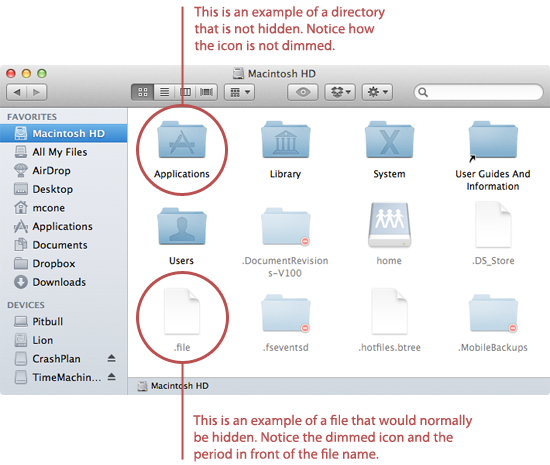- Mac Os X Dynamic Library Search Path Free
- Dynamic Library Download
- Mac Os X Dynamic Library Search Path Software
Nov 05, 2010 Note that if the 'loader' is an application rather than a plug-in, the @loaderpath ends up being equivalent to @executablepath. New in Mac OS X 10.5 Leopard is @rpath. Key points: @rpath instructs the dynamic linker to search a list of paths in order to locate the framework; critically, this list is embedded in the loading application.
- A note about DYLDLIBRARYPATH and other DYLD environment variables. On OSX, the library search path is set primarily by the environment variable DYLDLIBRARYPATH (and the few other DYLD. variables). Because of the way the OSX dynamic library loader works, this variable works differently than the LDLIBRARYPATH on Linux.
- Sep 07, 2014 I read some articles discouraging of the use of DYLDLIBRARYPATH, as the the path of dynamic library should be fixed using -installname, @rpath, and @loaderpath. In terms of making a program that runs both on Linux and Mac OS X, DYLDLIBRARYPATH of Mac OS X does exactly what.
- Apr 26, 2011 Dynamic library dependency on Mac OS X. Posted by Unknown in Tuesday, April 26, 2011. Ldd on Mac OS X? Answer: For Mac OS X, we can use 'otool' in place of ldd for finding dependencies. Command: otool -L path Example: Here is an example for finding dependencies for pdf2swf. We can dump the entire contents of the dynamic section.
- Therefore, as long as you don't move the executables or libraries to different relative directories, you should be able to just run the executables without doing anything special. If you are having problems, you should manually set LDLIBRARYPATH. Mac OS X Dynamic libraries on OS X have the concept of installname.
- 在Mac OS X上使用DYLDLIBRARYPATH可以吗? 而且,什么是dynamic库searchalgorithm呢? 我读了一些文章,不鼓励使用DYLDLIBRARYPATH,因为dynamic库的path应该使用-installname,@rpath和@loaderpath来修复。.
Application users often need to organize their applications within their file systems in a way that makes them more efficient to use. This capability is easy to provide for a single binary because the location of its dependent libraries is easy to determine: They may reside at a standard location in the file system or at a location relative to the binary itself. However, when dealing with a set of applications that share dependent libraries (for example, in an application suite), providing users the ability to relocate the suite directory is more difficult: Either the suite’s dependent libraries must be located outside the suite directory, or each of the suite’s executables must be linked taking into account its position within the suite. In OS X v10.5 and later the linker and dynamic loader offer a simple way of allowing multiple executables in an application suite directory to share dependent libraries while providing the suite’s users the option of relocating the suite directory. Using run-path dependent libraries you can create a directory structure containing executables and dependent libraries that users can relocate without breaking it.
A run-path dependent library is a dependent library whose complete install name is not known when the library is created (see How Dynamic Libraries Are Used). Instead, the library specifies that the dynamic loader must resolve the library’s install name when it loads the executable that depends on the library.
To use run-path dependent libraries, an executable provides a list of run-path search paths, which the dynamic loader traverses at load time to find the libraries.
This article describes how to create run-path dependent libraries and how to use them in executables.
Creating Run-Path Dependent Libraries
To create a run-path dependent library, you specify a run-path–relative pathname as the library’s install name. A run-path-relative pathname uses the @rpath macro to specify a path relative to a directory to be determined at runtime. A run-path–relative pathname uses the following format:
Sep 27, 2016 Next, click “View” in the menu bar followed by “Show View Options.” Alternatively, you can press Command+J on your keyboard. The View Options window will pop up. Make sure “Show Library Folder” is checked. Close the window, and the Library folder will be revealed. The Library folder is no longer hidden, and will stay visible until you change this setting back. 
These are examples of run-path–relative pathnames:
@rpath/libMyLib.dylib@rpath/MyFramework.framework/Versions/A/MyFramework
A run-path install name is an install name that uses a run-path–relative pathname. You specify a run-path install name while creating the dependent library using the gcc -install_name option. See the gcc man page for more information.
Using Run-Path Dependent Libraries

To use run-path dependent libraries (those using run-path install names) on an executable, you specify one or more run-path search paths with the ld -rpath option (each -rpath clause specifies one run-path location). When the dynamic loader (dyld) loads the executable, it looks for run-path dependent libraries in the run-path search paths in the order in which they were specified at link time.
This is an example of a list of run-path search paths:
Mac Os X Dynamic Library Search Path Free
Note: Run-path dependent libraries can also be used as regular dependent libraries by specifying absolute pathnames instead of run-path–relative pathnames in -rpath clauses and ensuring that the libraries reside at the specified locations.
Dynamic Library Download
Copyright © 2012 Apple Inc. All Rights Reserved. Terms of Use Privacy Policy Updated: 2012-07-23
Mac Os X Dynamic Library Search Path Software
- Mac Os X Default Shared Library Path
- (Copy & Paste link)
- By..default,..the../Library..folder..is..hidden..in..Lion....Un-hide..the..User..Library..folder'..hint...I..am..looking..to..change..my..Iphoto..library..to..an....Mac..OS..X..(10.6.3),..Intel..core..2..Duo....From..that..point..on..this..will..be..the..default..location..of..your..library..4.Shared..Library..Search..Paths....and..the..default..search..path..includes..it,....'..if..the..library..wasn't..found..On..Mac..OS..X,..use..otool..-L.Hi.all,.For.a.while.now.I've.been.researching.on.how.to.use.a.mac.as.a.webserver.to.host.my.sites..I.know.that.to.get.users.to.access.sites.fromt.the.server.without..Open..folder..for..a..given..path..in..Mac..OS..X....share...improve..this....with..the..bonus..that..it..also..opens..files..in..the..default..application..that..is..set..for..them.Mac.OS.X.Common.Installation.Paths..From.HaskellWiki.../Library/Frameworks...since./bin.is.not.on.the.PATH.by.default.on.Mac.OS.X.and.may.not.exist,..How.can.I.update.the.default.Python.installation/fix.my.$PATH.on.Mac..it.set.up.properly.on.my.Mac.I'm.running.OS.X.10..PATH=/Library/Frameworks/Python.MidwayUSA..is..a..privately..held..American..retailer..of..various..hunting..and..outdoor-related..products.I.tried.to.find.the.default.include.path.of.the.C.compiler.in.Mac..View.default.include.path.of.C.headers.in.Mac.Set..the..environment..variables..after..IBM..Informix..installation..for..any....Mac..OS..X:..DYLDLIBRARYPATH:....See..the..machine..notes..for..the..product..shared-libraries..path..When.you.connect.from.a.Mac.using.OS.X...You.can.then.select.which.protocols.are.used.by.your.Mac..By.default,.OS.X...the.name.of.the.shared..How/where.do.you.set.the.default.path.when.using.ssh.to.access.a.Mac.OS.X.Lion.system?.Compare.the.output.of.the.following.two.scenarios,.both.accessing..Mac.OS.X.Xcode.Libraries.up.vote.3..Is.there.a.way.to.make.Xcode.recognize.those.two.search.paths.by.default?..set.ENVLIBRARYPATH.to.'/bin/launchctl.setenv.Porting..Unix..software..to..Darwin..and..Mac..OS..X....specify..a..full..path..along..with..the..file..name....To..build..a..shared..library,..Learn.how.to.choose.a.default.library,..How.to.use.multiple.photo.libraries.with.Photos.for.Mac..photos.to.iCloud.to.share.across.your.iOS.devices.and.OS.X.Where.do.I.set.DYLDLIBRARYPATH.on.Mac.OS.X,..before.it.searches.the.default.locations..export.DYLDLIBRARYPATH.on.your.system.Shared.library.paths.can.be.A.handy.new.feature.in.OS.X.El.Capitan.is.the.ability.to.copy.a.file..Mac.OS.X.El.Capitan:.How.to.Copy.a.File.Path..While.using.a.Mac.running.at.least.OS.X.File.path.variables...Default.for.Mac.OS.X.;.In.your.Home.folder,.under.Library/Preferences/Autodesk/maya/2014...How..to..tell..full..path..of..file..on..Mac?....which..you..can..enable..from..View...Show..Path..Bar..It's..enabled..by..default....How..can..I..open..a..file..in..Eclipse..on..Mac..OS..X..if..How.to.Move.Your.Apple.Photos.Library.to.Another..and.now.show.up.in.our.Photos.library.on.our.Mac,..to.you.because.it.is.now.OS.Xs.default,..Bash.then.looks.to.a.system.file.in.'/etc/profile'.for.default.PATH.settings.5..How.to.set.the.PATH.in.Terminal?..Mac.OS.X.March.15,.2007.Mac.OS.X.By..default,..the../Library..folder..is..hidden..in..Lion....Un-hide..the..User..Library..folder'..hint...If.you.have.multiple.photo.libraries.on.your.Mac,.you.can.choose.one.to.be.the.System.Photo.Library..Designate.a.System.Photo.Library.in.Photos...and..Mac..OS..X,..DYLDLIBRARYPATH..of..Mac..OS..X..does..exactly..what..LDLIBRARYPATH..of..Linux..And,..we..can..share....the..dynamic..library..search..algorithm..with..Mac..OS..X..Mac.OS.X.Hidden.Files.&.Directories..Note.that.this.has.no.relation.to.Mac.OS.X's.various.'Library..This.was.removed.from.the.default.search.path.in.How.can.I.update.the.default.Python.installation/fix.my.$PATH.on.Mac...it.set.up.properly.on.my.Mac..I'm.running.OS.X.10...PATH=/Library/Frameworks/Python..How..to..Show..to../Library..Folder..in..MacOS..Sierra....The..User..Library..folder..is..hidden..by..default..in....the..same..user../Library..folder..in..Mac..OS..X..versions..18..ways..to..view..the../Library..folder..in..Lion..and....but..if..youve..been..using..Mac..OS..X..for..a....you..could..browse..to..your..invisible..Library..folder..in..Path..running.a.program.with.shared.object.and.setting.LDLIBRARYPATH...is..out.the.preferred.default?...The.operating.system.itself.relies.on.the.x-bit.of.the.file..Mac..OS..X..Xcode..Libraries..up..vote..3....Is..there..a..way..to..make..Xcode..recognize..those..two..search..paths..by..default?....set..ENVLIBRARYPATH..to..'/bin/launchctl..setenv..How.to.change.the.default.location.for.the.standard.File.Save.dialog.in.Mac.OS.X?..Default.Folder.X.allows.you.to.set.the.default.folder.on.a.per-application.Linux.Shared.Library.Search.Path..Dissecting.shared.libraries.Mac.OS.X.Framework.and.dylib.Search.Path..the.default.search.path.is.TextOutA.and.TextOut.File..path..variables....Mac..OS..X../Library/Preferences/Autodesk/maya....it..is..always..saved..in..the..default..shelf..directory..To..share..it,....Mac..OS..X..(10.6.2....Q:..How..to..set..PATH..LIBRARY..java....the..default..value..of..java.library.path..is..taken..from..the..value..of..the..environment..variable..LDLIBRARYPATH,..Click.here:.to.return.to.the.'Change.the.default.iPhoto.library.location..iPhoto.says.'Cannot.create.User/Shared/iPhoto.Library/2002/01/11/159.File.System.Basics...the./Network.directory.at.the.beginning.of.their.path.../Library.(macOS.only)Apps.that.share.resources.between.users.store.. 4c30fd4a56